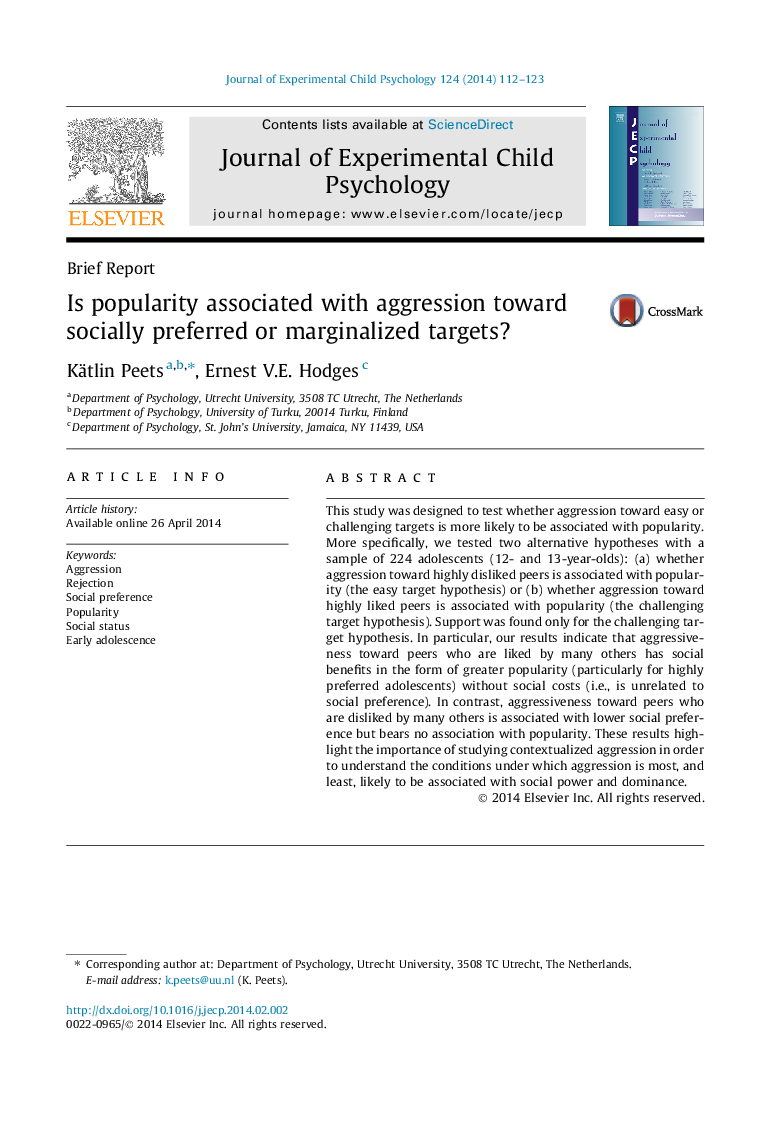| کد مقاله | کد نشریه | سال انتشار | مقاله انگلیسی | نسخه تمام متن |
|---|---|---|---|---|
| 918070 | 1473488 | 2014 | 12 صفحه PDF | دانلود رایگان |
• We examined associations between target-specific aggression and popularity.
• Aggression toward socially preferred peers is associated with greater popularity.
• This finding holds for perpetrators who are also at the top tier of the social preference hierarchy.
• Aggression toward least preferred peers is associated with lower likeability.
This study was designed to test whether aggression toward easy or challenging targets is more likely to be associated with popularity. More specifically, we tested two alternative hypotheses with a sample of 224 adolescents (12- and 13-year-olds): (a) whether aggression toward highly disliked peers is associated with popularity (the easy target hypothesis) or (b) whether aggression toward highly liked peers is associated with popularity (the challenging target hypothesis). Support was found only for the challenging target hypothesis. In particular, our results indicate that aggressiveness toward peers who are liked by many others has social benefits in the form of greater popularity (particularly for highly preferred adolescents) without social costs (i.e., is unrelated to social preference). In contrast, aggressiveness toward peers who are disliked by many others is associated with lower social preference but bears no association with popularity. These results highlight the importance of studying contextualized aggression in order to understand the conditions under which aggression is most, and least, likely to be associated with social power and dominance.
Journal: Journal of Experimental Child Psychology - Volume 124, August 2014, Pages 112–123
